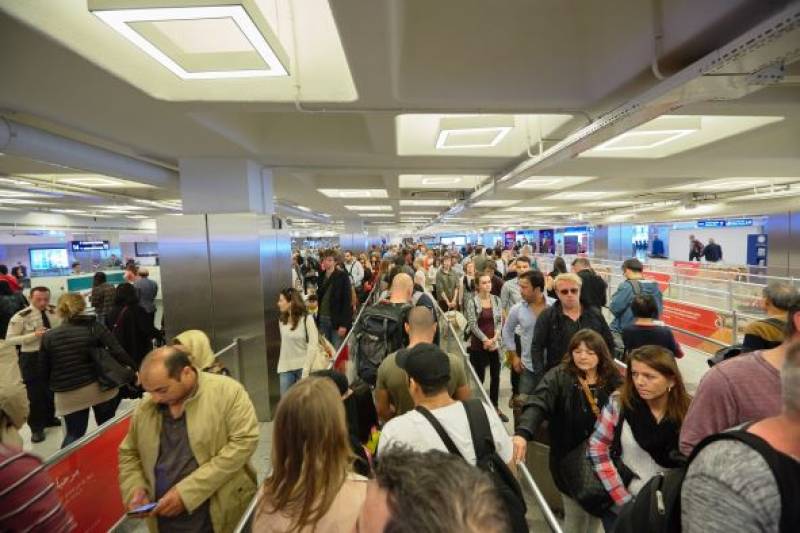
To be listed on the CAMPOSOL TODAY MAP please call +34 968 018 268.
article_detail
New EU passport Entry Exit System delayed yet again
The start of the EES travel system at European airports has been put back by another month

The launch date for the European Union’s new Entry/Exit System (EES) has been rescheduled to November 10, 2024. Previously slated for October 6, this is not the first time the system has been delayed, although specific reasons for this postponement remain undisclosed.
However, it is widely believed that EU member states need more preparation time to be able to implement the new system.
The EES, which is designed to replace manual passport stamping, has faced numerous delays since its initial launch date in 2021, though Spanish and European airports and borders have been busy preparing by installing new technology.
Various issues have caused continuous postponements, with the latest delay attributed to the need for more time to switch from manual to digital checks and to ensure that all member states are ready for the transition.
Once the EES is finally operational, all non-EU citizens entering the Schengen Area for short stays will need to register with the system, regardless of whether they require a visa.
This new procedure aims to streamline entry and exit processes in Europe by replacing passport stamping with biometric data collection, including fingerprints, passport details and photographs.
The collected data will be stored in a database for three years, removing the need for repeated registration each time a traveller enters or leaves the Schengen Area.
Although initial delays at the EU’s borders are expected due to the time required for registration, the system promises smoother travel once the majority of non-EU citizens are registered.
Europe’s airports not ready for EES
Several airports across the EU have expressed concerns about their readiness to implement the EES by October 6, which likely contributed to the decision to delay the launch. Smaller airports, in particular, have reported challenges with setting up the necessary equipment for registering non-EU travellers.
To mitigate fears of long queues, the EES will be launched alongside an app designed to facilitate the registration process. This app will enable travellers to pre-register their data online, potentially easing congestion at entry points.
It is true, however, that this app must undergo extensive testing with end-users and in multiple languages before it can be deemed fully operational. While EU officials are optimistic about the app’s readiness, representatives from the UK remain sceptical, predicting that the app may not be ready before the summer of 2025.
The delay in launching the EES could also impact the introduction of the European Travel Information and Authorisation System (ETIAS), a new form of travel visa waiver that non-Schengen citizens will have to pay when entering the EU.
Initially planned to launch six months after the EES, ETIAS could now also face delays as the effectiveness of the scheme relies on the EES to work. Consequently, a mid-2025 launch date for ETIAS seems more realistic at this point.
article_detail
Loading
Sign up for the Spanish News Today Editors Roundup Weekly Bulletin and get an email with all the week’s news straight to your inbox
Special offer: Subscribe now for 25% off (36.95 euros for 48 Bulletins)
OR
you can sign up to our FREE weekly roundup!
Read some of our recent bulletins:
25% Discount Special Offer subscription:
36.95€ for 48 Editor’s Weekly News Roundup bulletins!
Please CLICK THE BUTTON to subscribe.
(List price 3 months 12 Bulletins)
Read more stories from around Spain:
Contact Murcia Today: Editorial 000 000 000 /
Office 000 000 000



























